There are spoilers.
Director: Alfred Hitchcock
Screenplay: Thorton Wilder, Sally Benson, and Alma Reville
Starring: Teresa Wright, Joseph Cotton, Macdonald Carey, Patricia Collinge, Henry Travers, Wallace Ford, and Hume Cronyn
Images from the 2005 Universal Masterpiece Collection release.
Shadow of a Doubt is, for me, one of the most fascinating Hitchcock pictures. With it, our beloved master of the macabre arranged the unholy matrimony of the sinister with the banal, a subject that undoubtedly fascinated him and is present in much of his work. While it is said to be his favorite, he told Truffaut that:
"I wouldn't say that Shadow of a Doubt is my favorite picture; if I've given that impression, it's probably because I feel that here is something that our friends, the plausibles and the logicians, cannot complain about."
A common contemporary criticism leveled against Hitchcock's movies was how believable they were. Since that complaint has since died down, Hitchcock's other more outlandish movies like The Birds, Vertigo, North by Northwest, and Rear Window have gained considerable acclaim, overshadowing (ha!) a simple, yet masterful piece like Shadow of a Doubt. Nevertheless, the film's grip on me is unmatched by any Hitchcock film except maybe Rear Window. The Hitchcockian ideas are layered like one dense onion, and I am never bored by it.
Shadow of a Doubt tells the story of an American family in quaint Santa Rosa, California who is visited by their Uncle Charlie. His niece Charlie, who's named after him, simply adores her uncle. She soon discovers that Uncle Charlie may not be as wonderful as she thinks him to be. The film presents some of the best contrasts and juxtapositions of any Hitchcock movie.
Opening Shots
In the spirit of Jim Emerson's Opening Shots Project, I'll continue here.
The opening shots of Shadow of a Doubt show couples dancing to a waltz, which then dissolves to a view of the East (?) River. Along this river we see what appear to be homeless people:
This juxtaposition provides us with much of what the movie will be concerned with. Since we are first shown the couples dancing, this evokes a moment of glamour that is absent from the everyday feel of the rest of the film. We can read this as the divide between the fantasy of the past and the bitter reality of the present. This also suggests Uncle Charlie's disgust for the world and his justification for murdering widows: That their insulation from the real world borders along reprehensibility worthy of punishment. The shots also bring to mind the idea of losing our innocence as we mature. There is a pull on Uncle Charlie, where he is embarrassed by his youthful ignorance while at the same time, he yearns for the haven of the past and the good ol' days of 46 Birnam St..
I Now Pronounce You Uncle and Niece, Husband and Wife
Maybe the most interesting relationship developed in a Hitchcock movie is between Charlie and her uncle. The common perception is their psychic connection. The first time we see each of them, they lay in the same positions, forging a spiritual link of sorts:
While that interpretation is fine and dandy, I think it's valuable to dig deeper. I see their relationship as the marriage of innocence to evil... an incestuous union that serves as an allegory for the pervasive way in which the macabre has become a fact of everyday life. Anyone familiar with Hitchcock can see how this would appeal to him. From his innocent man wrongly accused pictures, to the everyday murder weapons, to his "chamber films" that hold up the mirror to the public and reveal the sinister goings on happening in the most average of homes, the idea of bringing corruption into an innocent situation is something that Hitchcock explores again and again in his movies.
This idea manifests itself in Shadow of a Doubt beautifully. The film brings up the motif of matrimony so frequently, that it's difficult for me to look at the film without thinking about it. I can see the whole film as the proposal, marriage, conflict, and divorce between Charlie and her uncle. The "marriage," so to speak, occurs when Uncle Charlie gives his niece a ring:
The scenes between the two Charlie's are the most fascinating in the film, and they carry with them inbred insinuations. This idea of marriage is brought up over and over again throughout Shadow of a Doubt. Watch Young Charlie's behavior evolve, and you can almost see the two as a married couple. At first, there is such a high admiration for him, that it borderlines on a crush. At the dinner scene where Charlie has found out about her Uncle's crimes, the two seem like a couple who are passive aggressively quarreling. As Charlie tells her uncle:
"You can throw the paper away. Dad's read it and you've read it. We don't need to play any games with it tonight."
In their subtle verbal jousting, there is also the sense of "adultery." Young Charlie's wardrobe is interesting. When she gets the idea to send a telegram to Uncle Charlie, she puts on this jacket:
The two buttons reinforce the dichotomy that Charlie and her uncle form. The jacket with the two buttons can be associated chiefly with her Uncle Charlie. Consider the dress she wears with the same pairing, this time with what appears to be birds instead of buttons:
This dress can be associated with Jack. Francois Truffaut considered Jack to be one of the weak links of Shadow of a Doubt. I'm inclined to agree, but only to a point. If he's lackluster and a bit humdrum, that's fitting. It's the same reason that Paul Henreid in Casablanca is somewhat drab. Teresa Wright and Joseph Cotten have to have the attention in the movie, and I feel that having Jack played more strongly could hurt their dynamic. In addition, it furthers the auteur theory for Hitchcock, since his films invariably have a policeman who is boring.
Incidentally, in that scene, Katherine (the one with the glasses) adds a lot to the picture and enhances the idea that Charlie is "seeing" older men. Each time we see Katherine, she is always ogling the men that are with Charlie. Clearly, she's jealous, or perhaps she sees it as gossip fodder. Regardless, I love how Hitchcock does it in a completely cinematic manner. It's the sort of thing that couldn't be written into dialogue.
Returning to the idea of an "affair" for the "marriage," the shot that brings these associations of Teresa Wright's wardrobe together is this one:
Simple, yet effective, this shot at its most apparent level shows a conflict in Charlie's mind. Should she trust this man's word or should she have faith in her uncle? But when we add the idea of marriage to the situation, it creates, in my mind, the idea of an affair. Once we form the associations of the dress with the birds and the jacket with the buttons, we can infer a kind of "affair," in which she is at the very least being unfaithful to her uncle.
The "divorce" of the film, then, would have to be that masterful confrontation at the back porch:
This shot is an easy one. Notice the little ring between them for pulling the shade down? It's a complete contrast to the earlier scene where Uncle Charlie gives his niece the ring. Their clothes are darker and the window is white. It's practically a negative print of the earlier scene.
If there is one more piece of evidence for the idea of marriage, it lies in Uncle Charlie's philosophy concerning widows:
"Women keep busy in towns like this. In the cities it's different. The cities are full of women, middle-aged widows, husbands dead, husbands who've spent their lives making fortunes, working and working. Then they die and leave their money to their wives. Their silly wives. And what do the wives do, these useless women? You see them in the hotels, the best hotels, every day by the thousands. Drinking the money, eating the money, losing the money at bridge, playing all day and all night. Smelling of money. Proud of their jewelry but of nothing else. Horrible, faded, fat, greedy women."
Uncle Charlie has such a complete disdain for widows, but moreover, he abhors the ignorant that leech off others. It is because of this belief that the "marriage" makes sense, at least for me. Uncle Charlie wants to stir the calm waters of Santa Rosa and awaken his niece to reality. Their bond can be seen as a multitude of marriages: innocence and corruption, fantasy and reality, youth and maturity, and awareness and ignorance. I'm sure there are others.
The Sinister in the Banal, Lost Innocence & Maturation: Something Wicked This Way Comes
Look at any Hitchcock picture and you can tell it's his. Some may be easier to recognize than others, but the vast majority (and certainly all the best ones) carry common threads. The big one is this undercurrent of macabre humor in the most pedestrian of situations. Look at The Trouble with Harry (one of his underrated movies). The whole thing concerns a town who fuddles around trying to figure out what to do with a dead body. It's black humor, but if you're in sync with it, it's hilarious. In Shadow of a Doubt, we get some of the best comic moments in Hitchcock's work. Chiefly, this comes from Charlie's father Joe and his literary friend Herb:
Their arguments center around what's the best way to kill a person... specifically, each other. I liked the one where they discuss the use of a blunt object, and Herbert says: "I'd press your hands against the lead pipe to make you look like a suicide case. Then again, it doesn't seem hardly likely that you'd kill yourself with a blunt object." The significance of these talks, other than comic relief, is that Young Charlie is able to call attention to their morbidity when she is finally awakened to the idea that the world isn't harmless.
Maturity begins with a loss of innocence. We are no longer naive, but "aware" of the world's horrors. Trying to recapture that innocence is the hardest thing in the world, and it's interesting that I've just read the graphic novel Ghost World and seen the screen adaptation, since the idea is present in it and Shadow of a Doubt as well. Uncle Charlie clearly has ambivalent desires. On one hand, there's the desire to recapture his youth in returning home. He even expresses his wish to settle down in Santa Rosa and live a quaint life. His voice is filled with warm nostalgia on talking about 46 Birnam Street and he says the world was a better place back then:
"Everyone was sweet and pretty then, Charlie. The whole world. Wonderful world. Not like today. Not like the world now."
And yet, he is simultaneously embarrassed by his youth when Emma remarks about his childhood accident:
"What's the use of looking backward? What's the use of looking forward? Today's the thing. That's my philosophy. Today."
In addition to the idea of marriage as an allegory for juxtaposition of opposing ideas, Shadow of a Doubt can be seen as a story of maturity. Like the story of Pandora, Young Charlie is innocent, yet stagnant. In an effort to stir those waters, she is awakened to a very simple realization: That the world is not a place of bliss, that her former problems always seem trivial (remember her angst at the beginning of the picture?), and that even her most beloved relative can be a sociopathic killer.
Another one of the great scenes in the film is at the bar:
What we have here is again a dichotomy that is very similar to Ghost World. In the film, Young Charlie doesn't seem to work, but rather spends all her time with her family. Her former classmate Louise works at a bar, and there couldn't be a more deadpan voice. The general plan after high school is college or work. In Charlie's case, she seems to hang in a limbo between the innocence of childhood and the worldliness of adulthood. It is in the film that she matures, and by the end, I don't think she's necessarily better off. Maturity is "better" in the sense that we aren't as naive as we once were. But I often wonder if that's worth sacrificing the happiness of being a child. It's something that I've certainly lost, and while I'm content now, the happiness is different.
An interesting way of thinking about Shadow of a Doubt is also to view it in the context of World War II. The ideas of ignorance, in this case, are clearly directed at the US. There are certainly undertones of film noir as well, although I'm not sure the movie counts as noir. It is the first of Hitchcock's pictures set in the US and is decidedly an American film. The ideas it covers are best seen in the context of the US as well as the era out of which it was born.
Shadow of a Doubt is one of the seminal works in Hitchcock's career and works at its most basic levels as an excellent thriller, a Hitchcockian Pandora's Box and an allegory for maturation , and an examination of marrying the sinister with the banal, the young with the old, fantasy and reality, and awareness and ignorance.
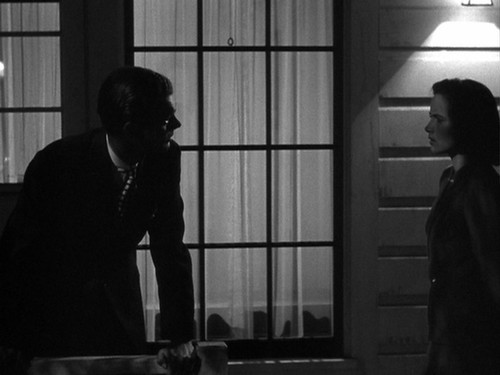
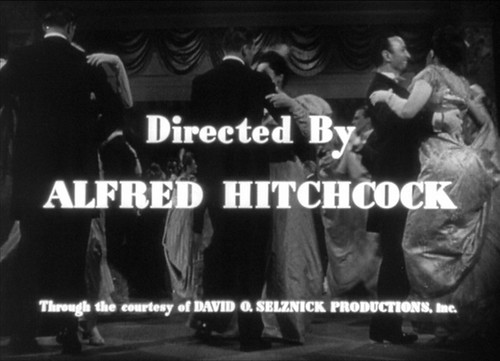
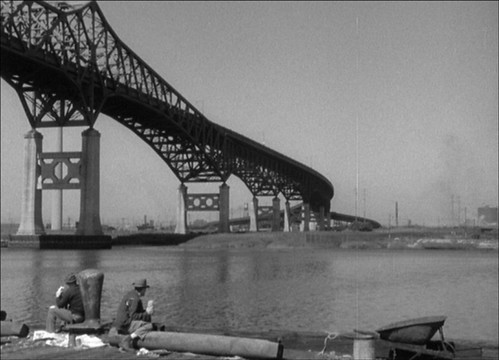
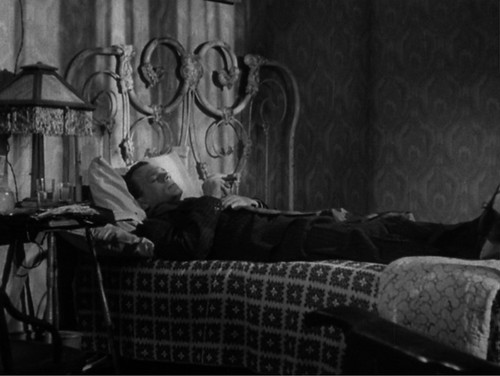
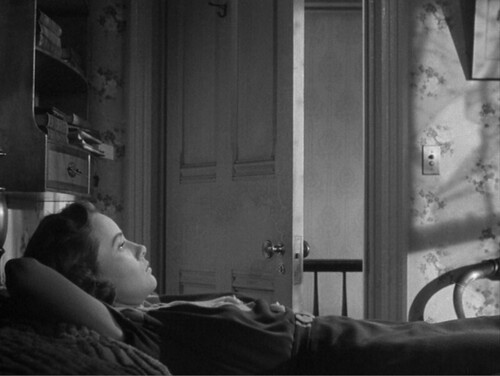
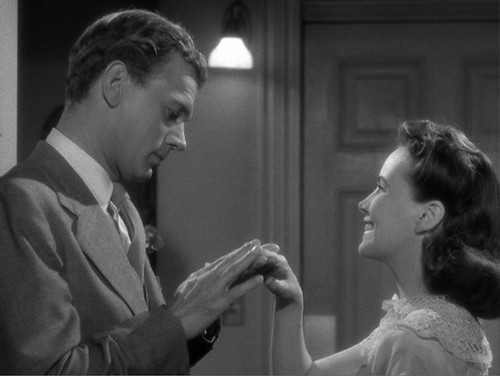
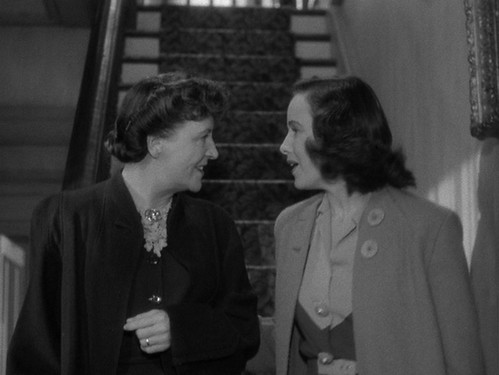
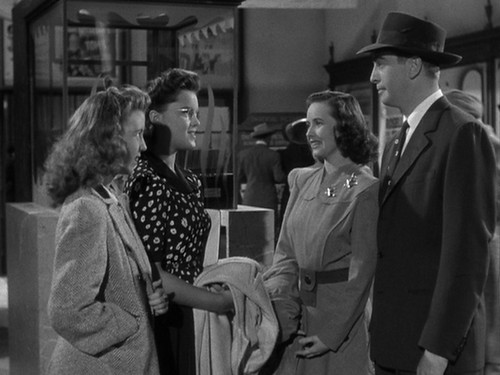
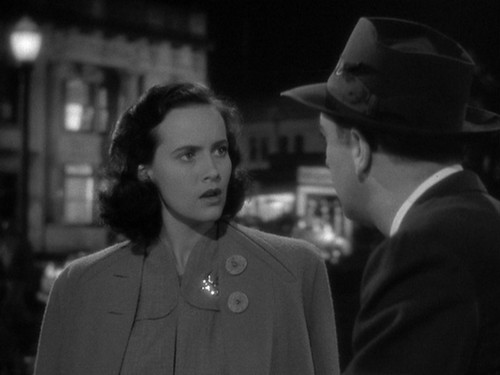
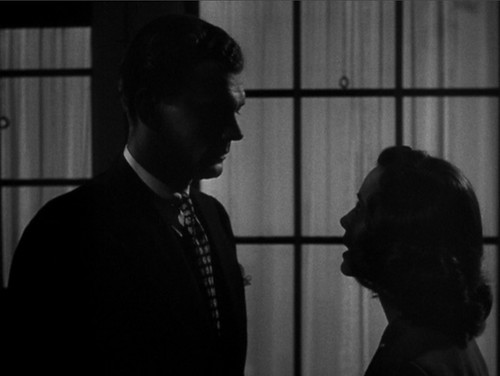
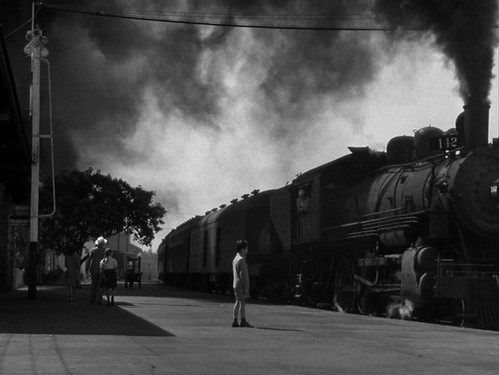
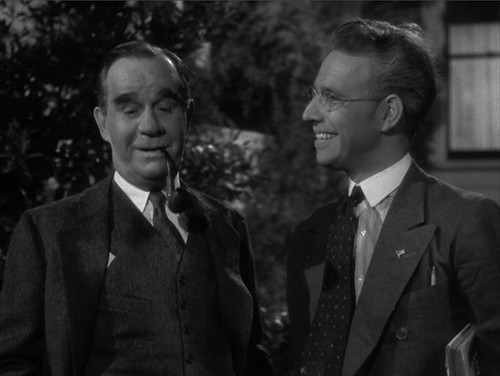
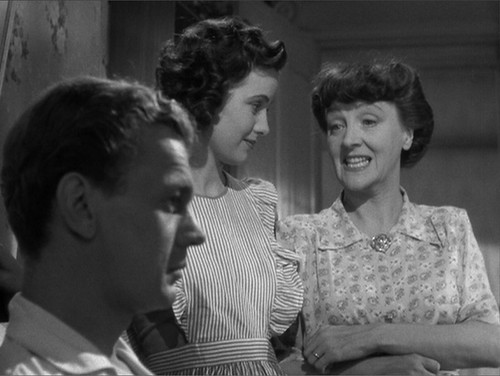
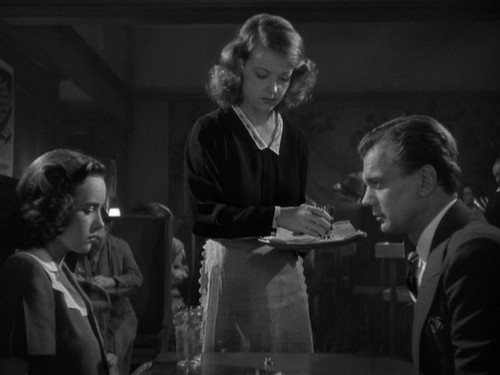
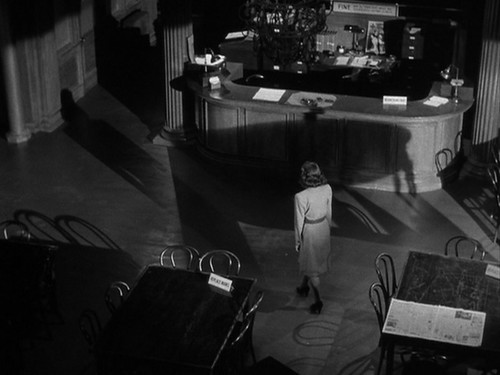
That is not the East River. It is the Pulaski Skyway in New Jersey. It crosses the Passaic and Hackensack Rivers.
ReplyDelete